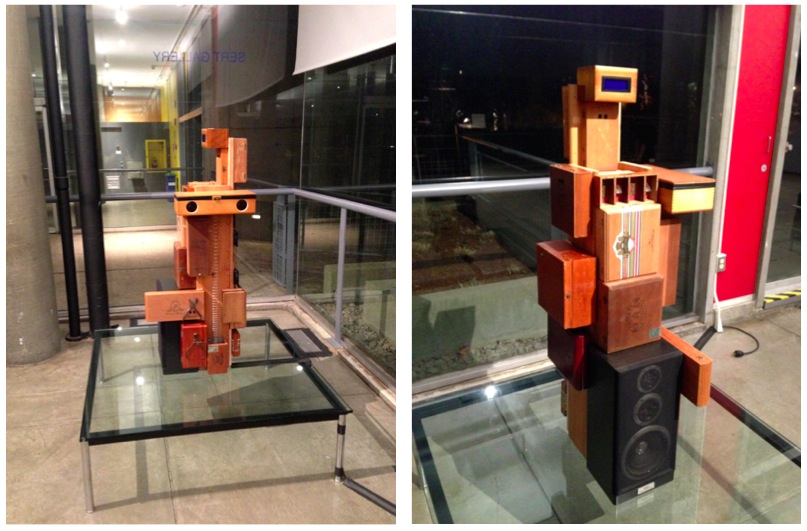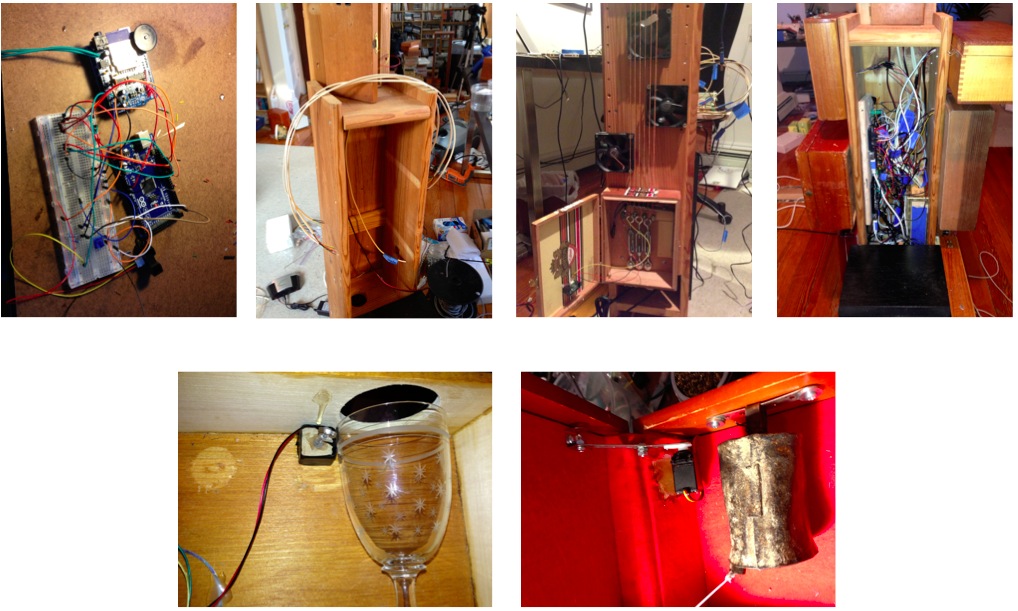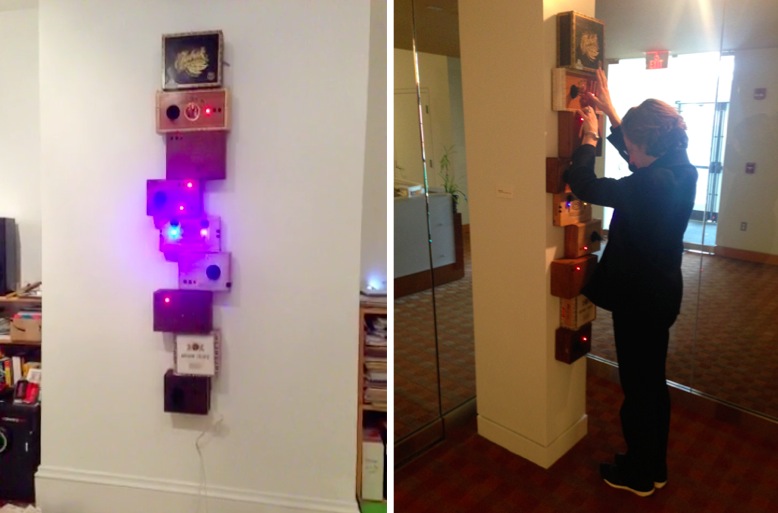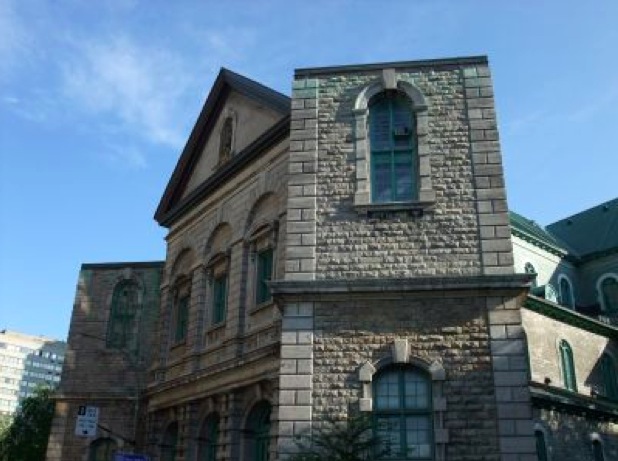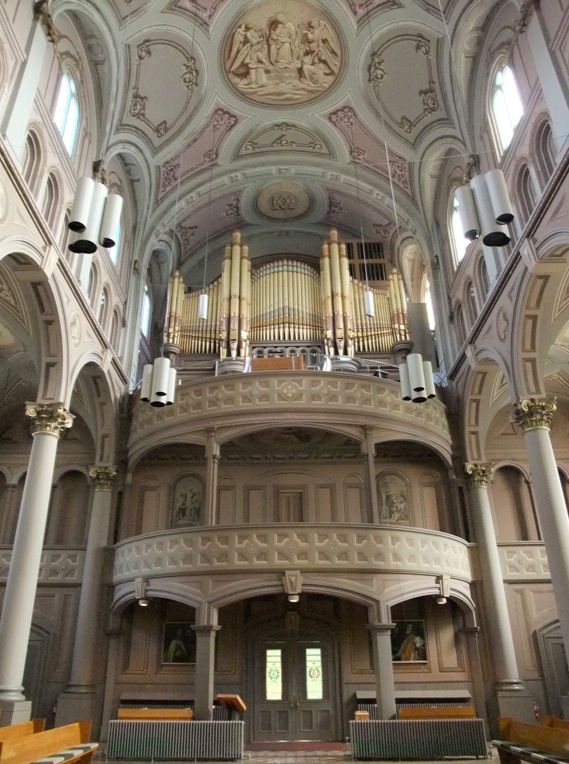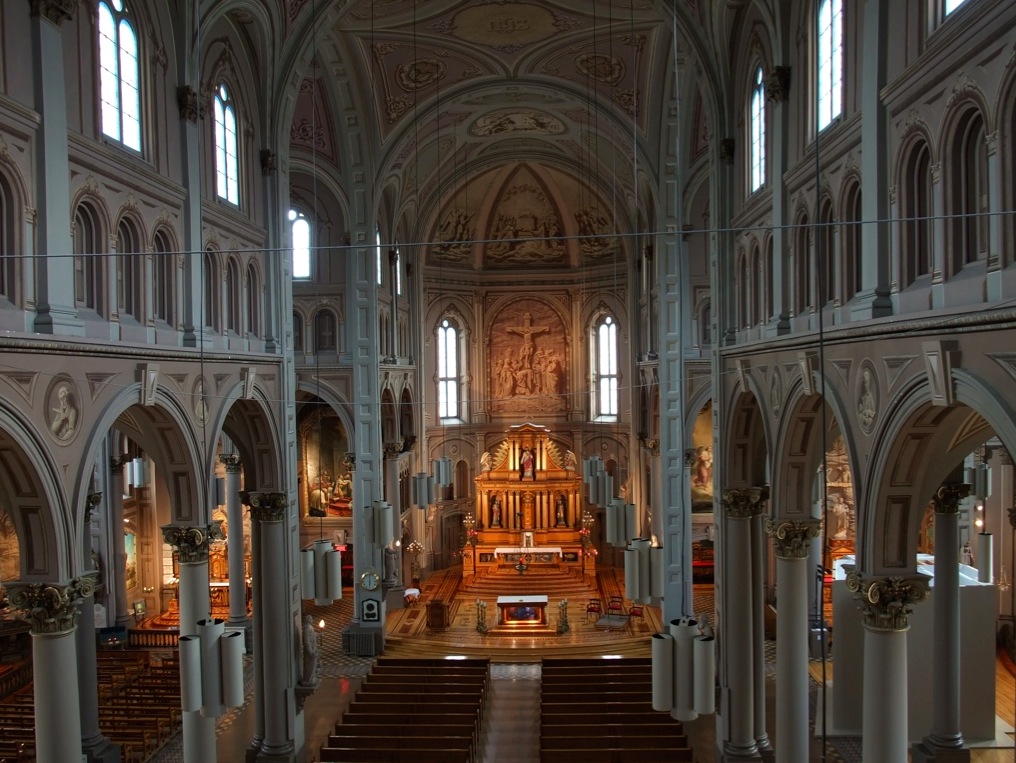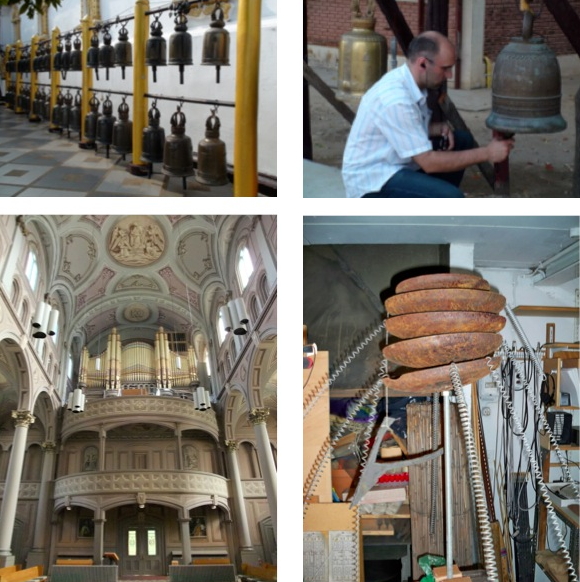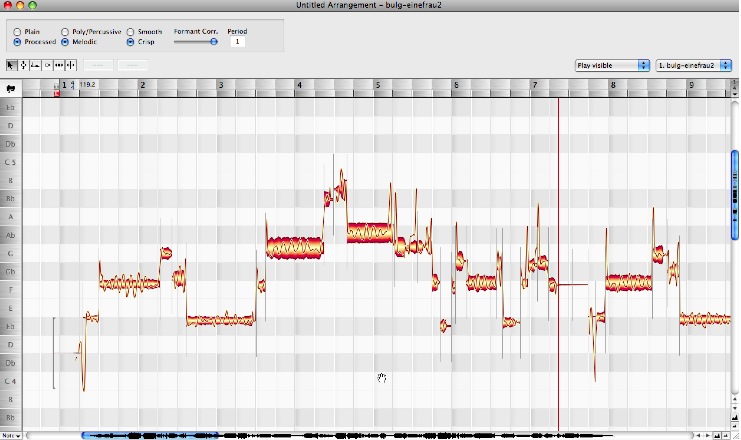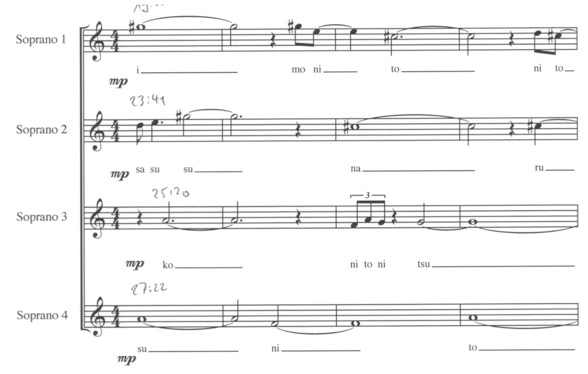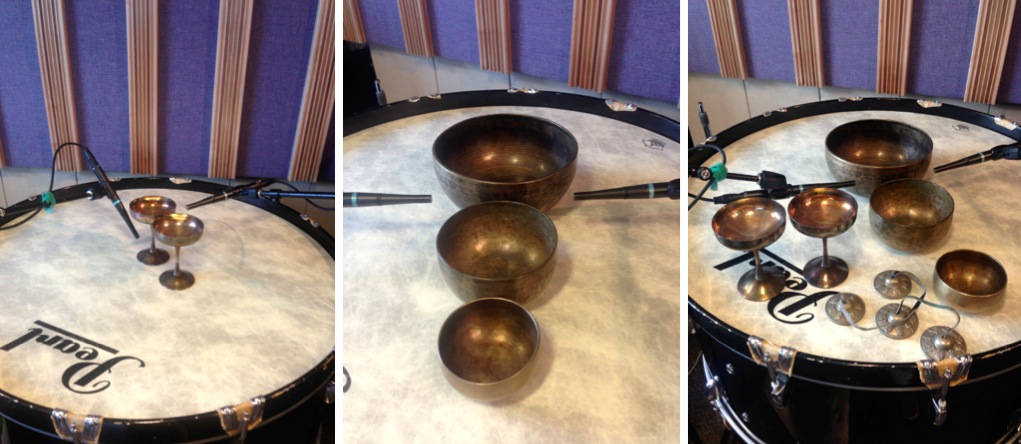The piece of art as an interface – interactive sound sculptures
These sculptures are continuing my research for a personalization of the relationship between the visitor and an expressive object.
‘Hommage à Schwitters’ is rooted in DADA, uses Kurt Schwitters’ ‘Ursonate’ and reacts with different acoustic and mechanical effects depending on the presence of a person around the sculpture.
It is a blend of Arduino processors, sensors, motors, etc.
The sculpture ‘Collaboration’ is even closer to the idea of an instrument. The visitor is invited to activate up to eight voices with his hands or body. He can choose from 16 sets of sound ensembles.
I will now speak of a project that had its origin here in Montreal in 2009. It started as a two-hour sound installation for the church Gesù.
With its ample space and a reverberation of 7 seconds, the church suggested a very different piece than my usual electroacoustic works.
The human voice is present in most of my compositions for more than 25 years. Sitting in this church on my first visit in 2008, I imagined 200 singers of many ethnicities and religions celebrating together – while surrounding the audience. The installation was subsequently presented in the cities of Erfurt and Cologne in Germany, but I was now looking for a way to introduce the idea of an utopian ritual also as a concert piece.
In 2014, I realized ‘Issho ni’, which is partially based on excerpts of the sound installation, but recomposes material, adds new voices and seeks a more controlled temporal evolution. For a concert piece I can imagine the audience experience more specifically than for an installation where spectators move in and out. The piece surrounds and overwhelms the listener who becomes a witness and passive participant in a slow illusory celebration. Elements from secular and religious sources join to commemorate unity and joy.
All sound sources were recorded individually: voice, bells, flutes, organ, percussion, and sound objects.
With ‘Melodyne’ I altered the pitches of the notes to harmonize songs from different cultures and to make them join my own harmonic development.
Original voice of Bulgaria:
Transposed on one of my chords:
Combined with an organ recording from the church Gesù:
I also composed four-voice counterpoints, which were recorded in the studio with soprano Jennifer Ashe:
Their combination with traditional voices:
Two examples of percussion sound recordings. I placed Tibetan bowls onto the skin of a bass drum:
Their combination with voices from Korea:
To give you an impression of the musical texture, I’ll play a four-minute excerpt of the composition. Obviously, such a project would be impossible without the existence of the technology itself, but also demands its integration into the process of design and production of the work.

